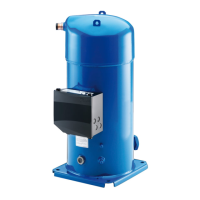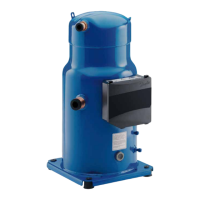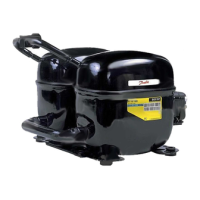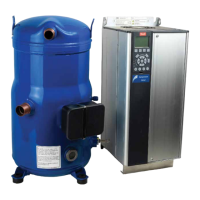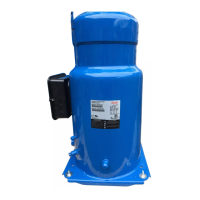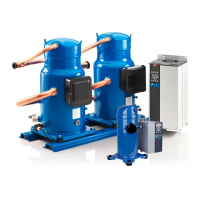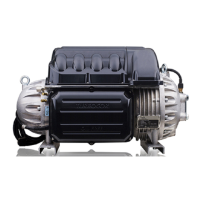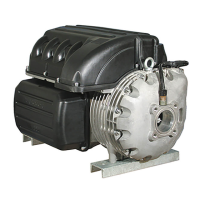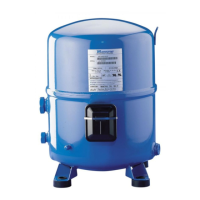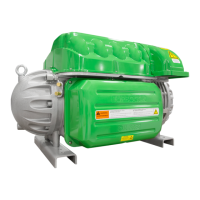40
FRCC.PC.007.B8.02
Application guidelines
Installation
System cleanliness
The refrigerant compression system, regardless
of the type of compressor used, will only provide
high e cienc y and good reliability, along with a
long operating life, if the system contains solely
the refrigerant
and oil it was designed for. Any
other substances within the system will not
improve performance and, in most cases, will be
highly detrimental to system operations.
The presence of non-condensable substances
and system contaminants such as
metal
shavings, solder and ux, have a negative
impact on compressor service life. Many of these
contaminants are small enough to pass through a
mesh screen and can cause considerable damage
within a bearing assembly.
The use o
f highly hygroscopic polyolester oil
in R410A compressors requires that the oil be
exposed to the atmosphere as little as possible.
System contamination is one of main factors
a ecting equipment reliability and compressor
ser
vice life. It is important therefore to take
system cleanliness into account when assembling
a refrigeration system.
During the manufacturing process, circuit
contamination may be caused by:
• Brazing and welding oxides,
• Filings and particles from the removal of burrs
in pipe -work,
• Brazing ux,
• Moisture and air.
Consequently, when building equipment
and assemblies, the precautions listed in the
following paragraphs must be taken
.
Tubing Only use clean and dehydrated refrigeration-
grade copper tubing. Tube-cutting must be
carried out so as not to deform the tubing
roundness and to ensure that no foreign debris
remains within the tubing. Only
refrigerant grade
ttings should be used and these must be of
both a design and size to allow for a minimum
pressure drop through the completed assembly.
Follow the brazing instructions on next pages.
Never
drill holes into parts of the pipe-work
where lings and particles can not be removed.
Brazing and soldering
When brazing copper-to-copper connections,
the use of copper/phosphorus brazing alloy
containing 5% silver or more with a melting
temperature of below 800°C is recommended. No
ux is required during brazing.
Copper to copper
connections
Do not bend the compressor discharge or suction
lines or force system piping into the compressor
connections, because this will increase
stresses that are a potential cause of failure.
Recommended brazing procedures and material,
are described section "Compressor
connection".
These operations must be performed by a
quali ed personnel in compliance with all
pertinent practices and safety procedures.
Dissimilar metals
connection
When manipulating dissimilar metals such as
copper and brass or steel, the use of si
lver solder
(5% or more) and anti-oxidant ux is necessary.
Please contact Danfoss Technical support for any
deviation from this guidelines.
Compressor connection When brazing the compressor ttings, do not
overheat the compressor shell, which co
uld
severely damage certain internal components
due to excessive heating. Use of a heat shield
and/or a heat-absorbent compound is highly
recommended. Due to the relatively sizable
tubing and tting diameters a double-tipp
ed
torch using acetylene is recommended
for brazing operation on Danfoss SH scroll
compressors.
heat shield
C
B
A
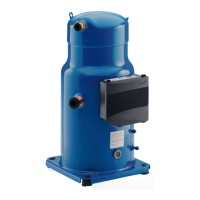
